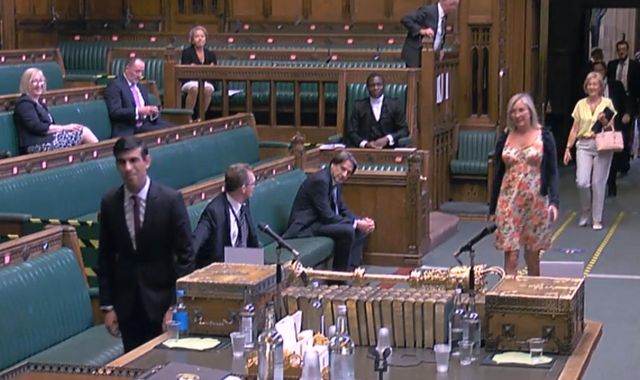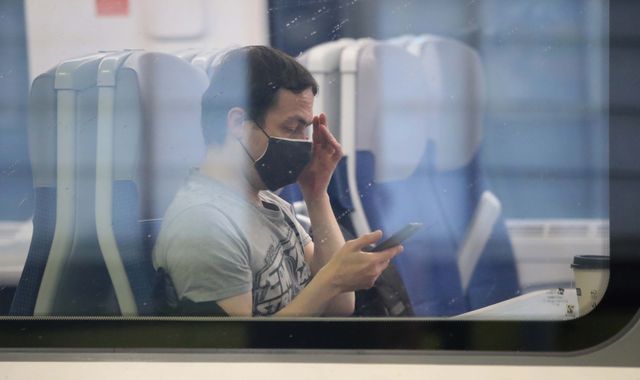Long queues and lost MPs: Socially distanced voting didn’t go all that well in Westminster
Written by News on 03/06/2020
It dates from 1097 and its place in London’s history is almost unrivalled.


Charles I and the gunpowder plot conspirators were tried there and in recent years, Nelson Mandela, Barack Obama and the Queen – four times – have addressed parliament there.
But on the day MPs returned to the Commons after the Whitsun recess, a packed Westminster Hall resembled the snake-like queuing areas of Disneyland, Alton Towers or a budget airline check-in.
These were not members of the public standing in line, however, but MPs waiting to vote on moves by the Leader of the Commons, Jacob Rees-Mogg, to scrap the so-called “remote parliament” and return to the normal raucous, rowdy atmosphere of the chamber and traditional voting in crowded, sweaty, heaving division lobbies.
The reason for the long queues: the speaker, Sir Lindsay Hoyle, had declared that Public Health England had ruled the division lobbies were a health hazard and a breeding ground for COVID-19 when packed with grunting, sneezing, coughing MPs during voting.
And vote for Mr Rees-Mogg’s reforms they did – eventually. But this socially distanced voting took a while. A long while.
About an hour-and-a-quarter for two votes, the time that would normally take for four or five divisions.
While this marathon of parliamentary democracy was going on, what was revealing and perhaps even alarming was how some – even very senior – MPs don’t know their way around Westminster.
I personally performed what I regard as a public service when I had to direct the Chancellor Rishi Sunak – the second most powerful member of Boris Johnson’s government – from the Central Lobby to Westminster Hall.
“It’s not as if he’s in charge of anything important,” snarled a grumpy Labour MP who witnessed my good deed.
He wasn’t the only lost soul, however. A number of MPs of many years’ standing who ought to have known better, were equally lost.
When the lost souls eventually found their way to Westminster Hall, the first vote, rejecting a plea to keep remote voting, was defeated after nearly 45 minutes by 242-185, which meant only 427 of the 600+ MPs eligible to vote took part.
The second, approving Mr Rees-Mogg’s proposals by 261-163, took a mere half an hour or so. The government’s majority was bigger this time because a number of Tory rebels in the first vote abstained in the second.
Did the shorter time taken for the second division mean MPs were getting the hang of this socially distanced voting?
Well, three hours later they had a chance to do it all again, in a showdown on parliamentary boundary changes.
During that vote, deputy Speaker Nigel Evans ordered a number of MPs wearing face masks to remove them, no doubt fearing there were imposters casting a vote!
Earlier, Mr Rees-Mogg, lampooned as “the member for the 18th century” and famous – or infamous – for lying down and stretching his long legs out on the government frontbench during a debate last year, was making the case for a return to the old ways.
Opening a debate limited to 90 minutes, he spoke for nearly 35, largely due to taking dozens of interventions, which exasperated and annoyed the senior deputy speaker, Dame Eleanor Laing, who desperately tried to speed up proceedings, not altogether successfully.
Ahead of the debate, Labour’s wily and wise chief whip, Nick Brown, had predicted a “Rees-Mogg conga”. If only. At least the Cuban carnival dance moves at a decent pace. This one was painfully slow.
Since MPs couldn’t vote in the Aye and No lobbies and had to stay two metres apart, they were forced to queue in Westminster Hall before voting in the chamber itself. Many began queueing while the debate was still going on, a good quarter of an hour before the division bell rang.
But the queue moved so slowly that MPs weren’t just queuing in Westminster Hall. The line trailed back out into New Palace Yard, under the underpass beneath Bridge Street and up the escalator into Portcullis House.
It was estimated that the queue was 1km long – nothing if you’re waiting to see the attractions at Disneyland or Alton Towers, but hopefully longer than an airport check-in for flying economy.
Critics would no doubt say that MPs aren’t used to queuing to fly economy. And they didn’t like this experience one bit.
There was lots of moaning when they returned to the Central Lobby after the first vote.
Complaints like “ridiculous”, “shambles” and “****-up in a brewery” spluttered from the lips of gasping, perspiring honourable members, especially those who had to queue outdoors in the heat of New Palace Yard. Many MPs tweeted their annoyance.
After the chaos and confusion, one senior Tory MP claimed some MPs had deliberately walked along the queue in a bid to embarrass Mr Rees-Mogg. Surely not? Perish the thought.
If true, that will have been clocked by the speaker, Sir Lindsay Hoyle, who took himself from the chair to observe personally what was going on during the vote.
Another wily operator, the speaker. His letter to MPs on the eve of these votes suggested that Sir Lindsay was no fan of what Mr Rees-Mogg was proposing.
He will probably have concluded that after these farcical scenes, socially distanced voting along these lines doesn’t work.
:: Listen to the Daily podcast on Apple Podcasts, Google Podcasts, Spotify, Spreaker
Not only does it exclude the likes of Tory MP Robert Halfon, who couldn’t come to vote because of a medical condition, and Labour’s Margaret Hodge, who is too old at 75, but the whole process takes too long and is a waste of time.
And if the government persists with votes like these, what’s to stop Labour – or the SNP or Lib Dems, for that matter – forcing votes for the hell of it when they wouldn’t normally, just to cause the government grief?
The government’s aim in attempting to bring the Commons back to normal was to set an example to the public.
But it does seem unjust to disenfranchise MPs on the grounds of medical conditions, age, pregnancy, maternity leave or other factors.
With the cushion of its 80-seat majority, the government has won these votes comfortably.
Ever the traditionalist, Mr Rees-Mogg doesn’t want to give way to his opponents on remote voting because he doesn’t want to risk the possibility of it becoming permanent.
But for as long as COVID-19 rules and Public Health England’s warnings remain in place, we haven’t heard the last of this row.
But at least the chancellor knows the way from the Central Lobby to Westminster Hall now. I hope!
(c) Sky News 2020: Long queues and lost MPs: Socially distanced voting didn’t go all that well in Westminster







